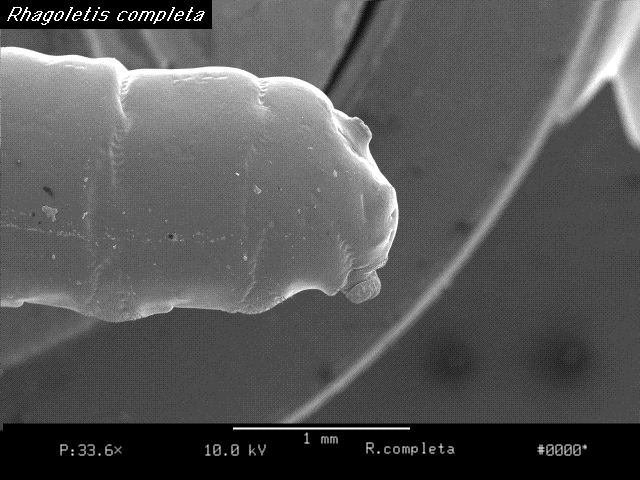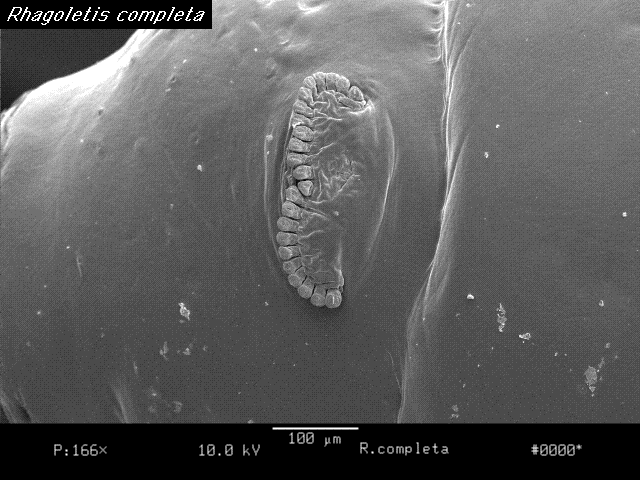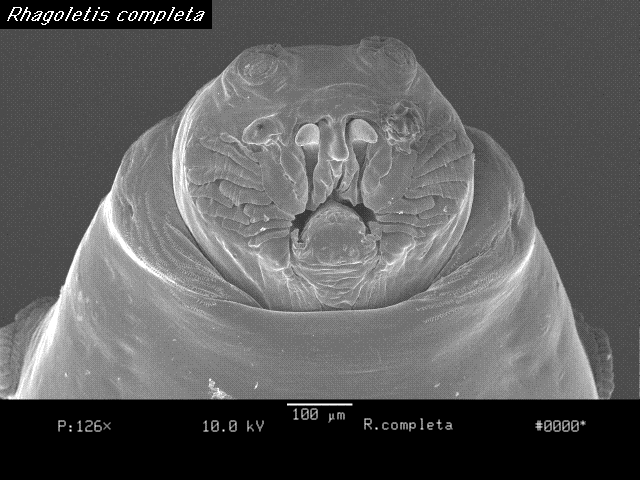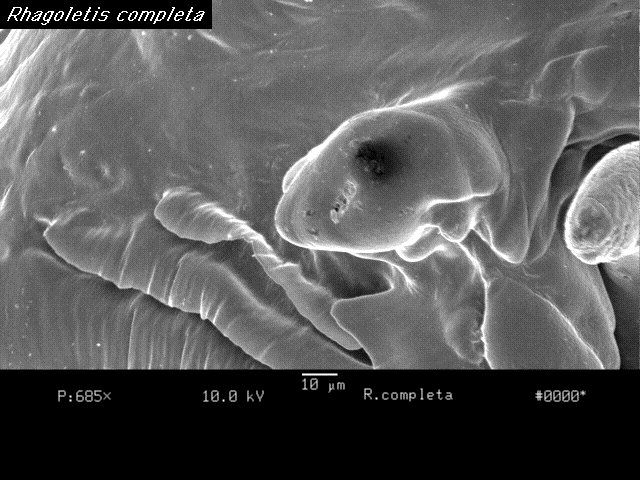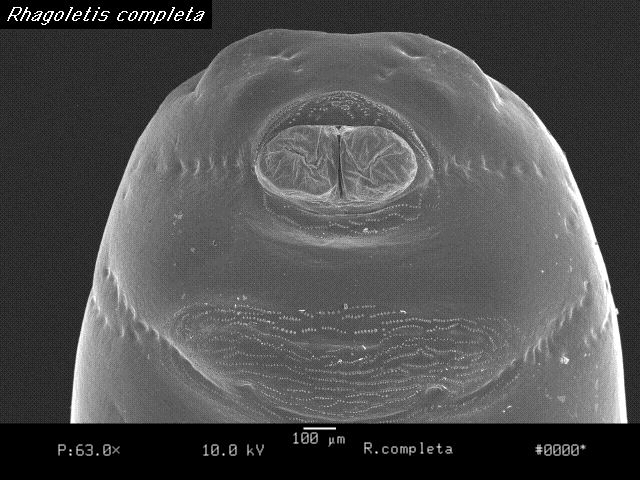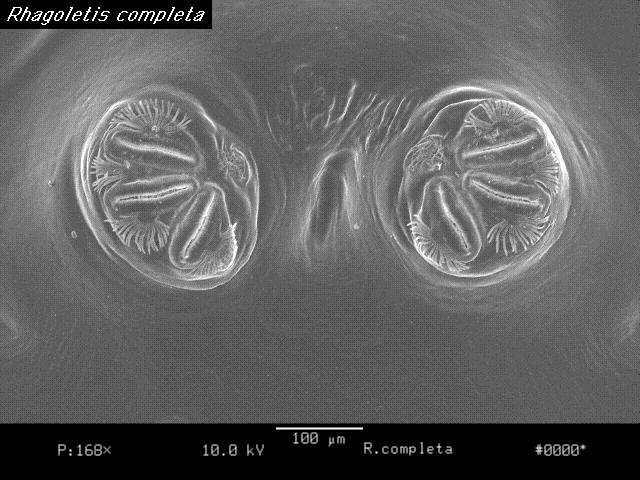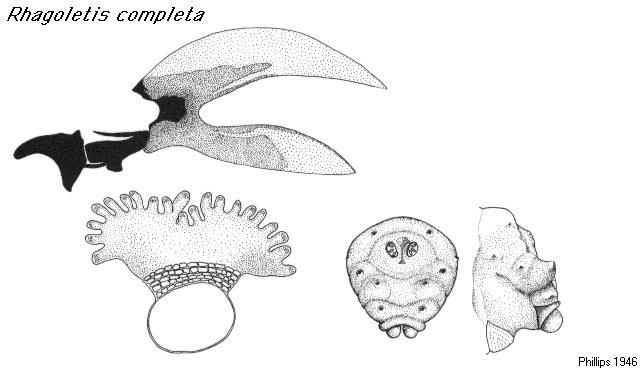Rhagoletis completa
Common name
walnut husk flyDescription
Typical of Rhagoletis larvae with the following specific characteristics for the 3rd instar:
Body. Medium-sized; body length 8-10 mm.
Head. Stomal organ: Other peg-sensilla-like structures absent.
Stomal region: One large, sclerotized stomal guard present. Oral ridges present; number of oral ridges 7-8; margins entire. Some oral ridges are deeply divided, imbricate. Accessory plates present or absent; number of accessory plates (when present) 1–2; margins unserrated.
Anterior spiracles. Anterior spiracles appearing bilobed. Number of anterior spiracular tubules 15-21; in a single irregular row.
Spinules and creeping welts. Dorsal spinules on segment T1, sometimes also on T2.
Caudal segment (A8) and anal lobes. Anal lobes either very protuberant, or plainly visible but not protuberant.
Posterior spiracles. Slits ~3x longer than wide. Dorsal spiracular processes with numerous trunks (medum processes). Number of dorsal spiracular processes 12–13. Number of ventral spiracular processes 12–13. Number of lateral spiracular processes 4–11.
Host plants
| Family | Genus |
| Juglandaceae | Juglans |
| Rosaceae | Prunus |
Part of plant attacked: fruit.
Biogeographic region and distribution
Nearctic, PalearcticUSA and Mexico (Minnesota south to Nuevo Leon and Mississippi); introduced USA (Washington and Utah to California), Switzerland and n. Italy.
Adult taxonomy
Rhagoletis completa CressonRhagoletis suavis ssp. completa Cresson 1929: 412.—USA. California: San Bernardino Co., Chino. HT ♂ ANSP.
Rhagoletis juglandis: Boyce 1929: 269.—misid. See Foote et al. 1993: 341.
References
Carroll, L. E., A. L. Norrbom, M. J. Dallwitz, and F. C. Thompson. 2004 onwards. Pest fruit flies of the world – larvae. Version: 8th December 2006. http://delta-intkey.com.
White, I. M., and M. M. Elson-Harris. 1992. Fruit flies of economic significance: their identification and bionomics. CAB International; Wallingford, UK. 601 p.



